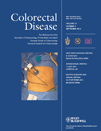Short-term outcome following percutaneous tibial nerve stimulation for faecal incontinence: a single-centre prospective study
Abstract
Aim Percutaneous tibial nerve stimulation (PTNS) is increasingly being used as a treatment for faecal incontinence (FI). The evidence for its efficacy is limited to a few studies involving small numbers of patients. The aim of the study was to assess the efficacy of PTNS in patients with urge, passive and mixed FI.
Method A prospective cohort of 100 patients with FI was studied. Continence scores were determined before treatment and following 12 sessions of PTNS using a validated questionnaire [Cleveland Clinic Florida (CCF)-FI score]. The deferment time and average number of weekly incontinence episodes before and after 12 sessions of treatment were estimated from a bowel dairy kept by the patient. Quality of life was assessed prior to and on completion of 12 sessions of PTNS using a validated questionnaire [Rockwood Faecal Incontinence Quality of Life (QoL)].
Results One hundred patients (88 women) of median age of 57 years were included. Patients with urge FI (n = 25) and mixed FI (n = 60) demonstrated a statistically significant improvement in the mean CCF-FI score (11.0 ± 4.1 to 8.3 ± 4.8 and 12.8 ± 3.7 to 9.1 ± 4.4) with an associated improvement in the QoL score. This effect was not observed in patients with purely passive FI (n = 15).
Conclusion The study demonstrates that PTNS benefits patients with urge and mixed FI, at least in the short term.




